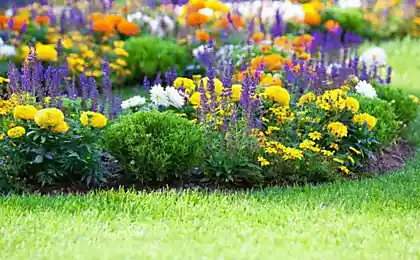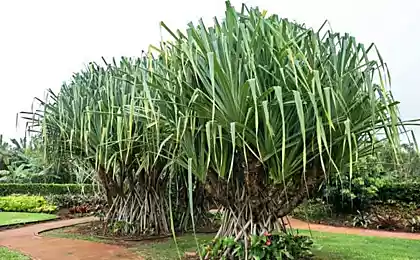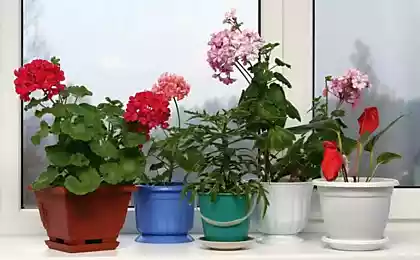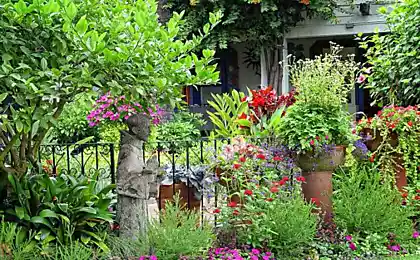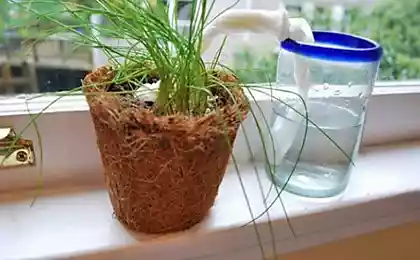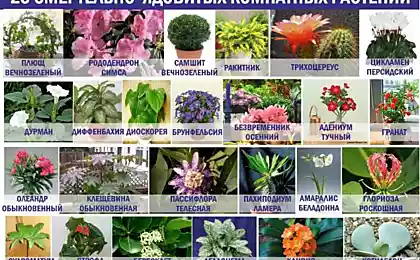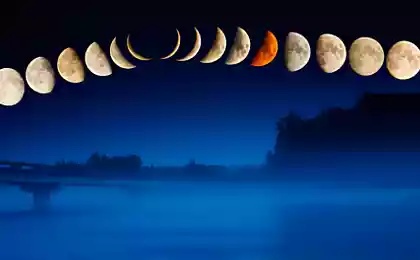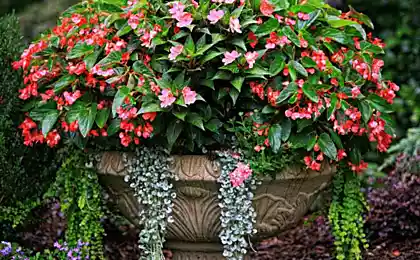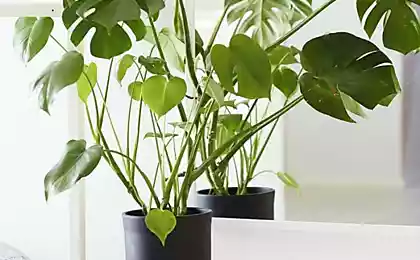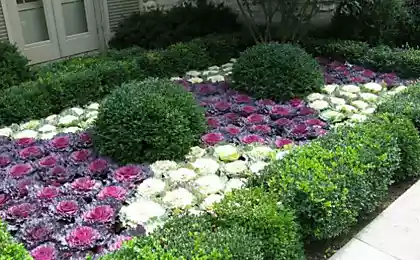5779
The strangest plants in the world
Rafflesia Arnoldi (Rafflesia arnoldii) - parasitic plant with the largest flowers in the world, but completely devoid of leaves and roots Steblin.
Rafflesia flower in the bud looks like a head of cabbage, and in expanded form up to 1 meter in diameter and weighs 4.6 kg.
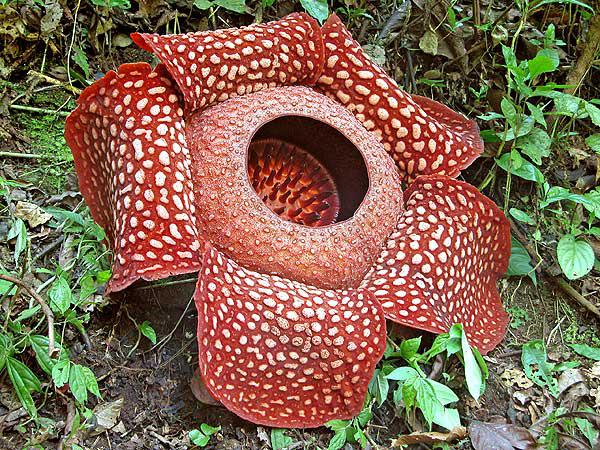
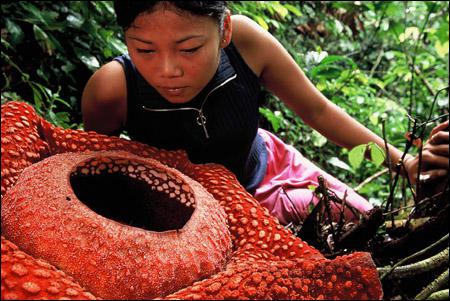
Gidnora African (Hydnora africana) - insectivorous flower that grows in the deserts of South Africa.

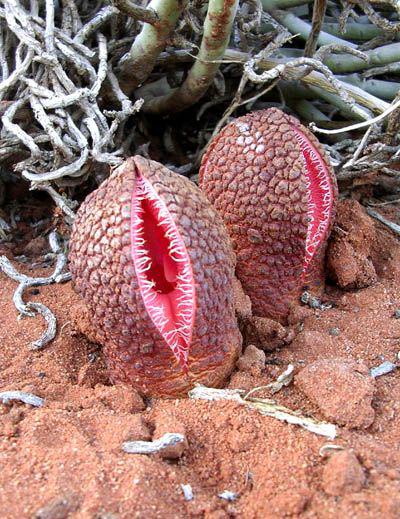
Arum ordinary (Dracunculus vulgaris) - plant height of 90 cm, the leaves reach 20 cm in length.
Petioles and stems are fleshy - with brown spots, which gives them the appearance of snake skin. At the top of each Steblin with early summer inflorescence appears. Blanket with wavy edge reaches a length of 45 cm. Outside, it is a pale green, inside - purple and crimson. Dark purple spathe of the same length as the veil.
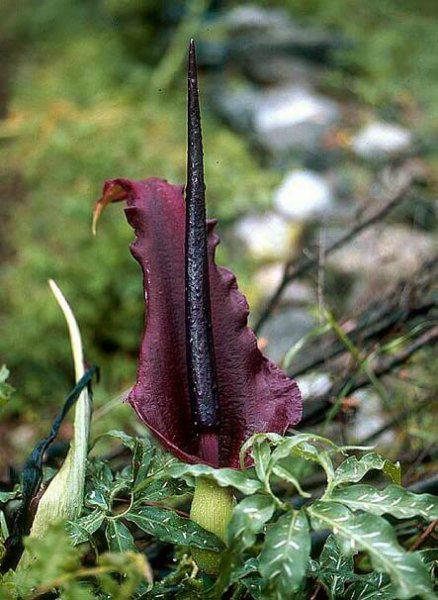
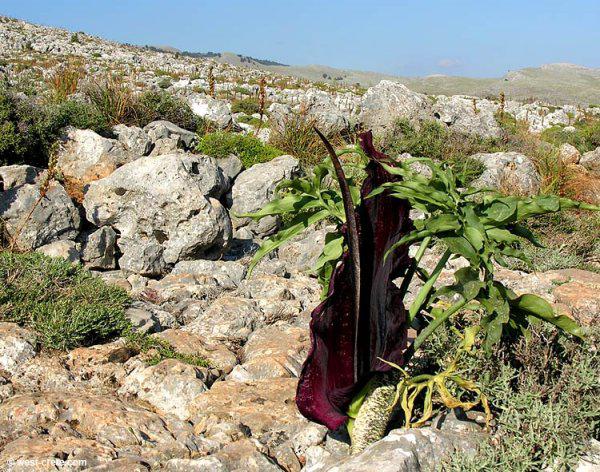
Amorphophallus (Amorphophallus) refers to the lily family. Its flowers are dissected in the middle of huge leaves, from which comes a large spathe.
The aroma of this plant is usually compared with the smell of rotten eggs, spoiled meat or fish, but it attracts insects that pollinate the plant.
Amorphophallus opened Florentine scholar in 1878 in Sumatra.
The plant lives about 40 years and during that time blooms a couple of times.
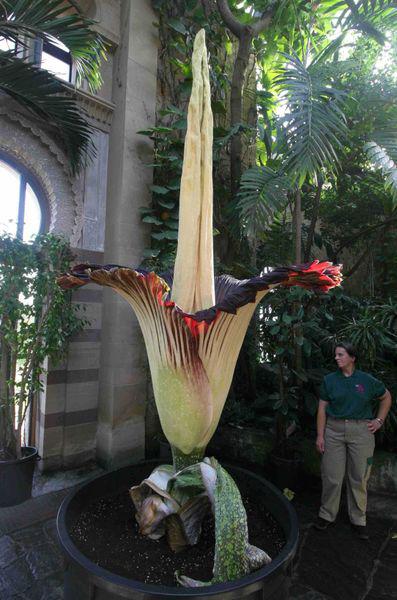
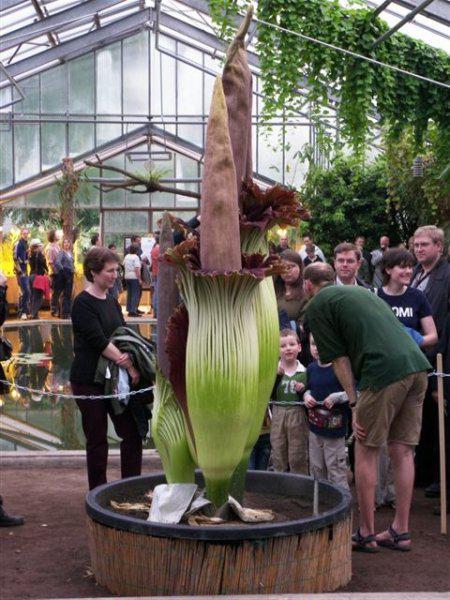
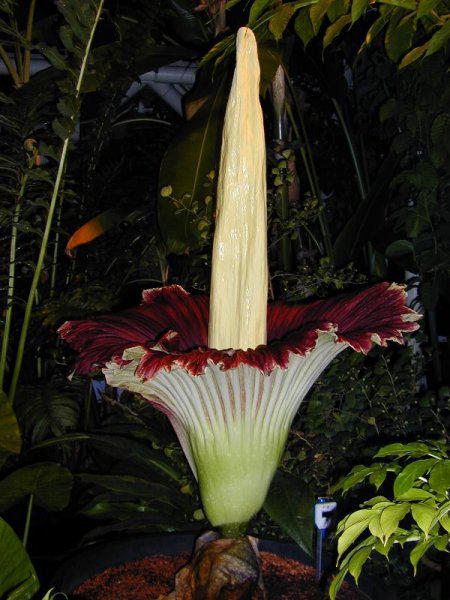
Wollemi (Wollemia nobilis)
In August 1994, D.Nobl (D.Noble; National Parks and Wildlife of New South Wales, Australia) got into one of the wildest parts of the National Park "Wollemi", where he found some strange trees. The tallest of them with the barrel meter diameter reached 35 meters. The trunks were covered with chocolate-brown spongy bark-like bubbles of chocolate, and branches - densely covered with large broad needles, with young needles were noticeably brighter than the old.
This kind of relic conifers was called Wollemi Nobilis - on behalf of the park and the discoverer.
Wollemi - currently "living fossil"; its closest relatives are known from fossils the Jurassic and Cretaceous (200 - 65 million years ago).
The population is very low: only 23 known adult tree (the oldest about 400 years).
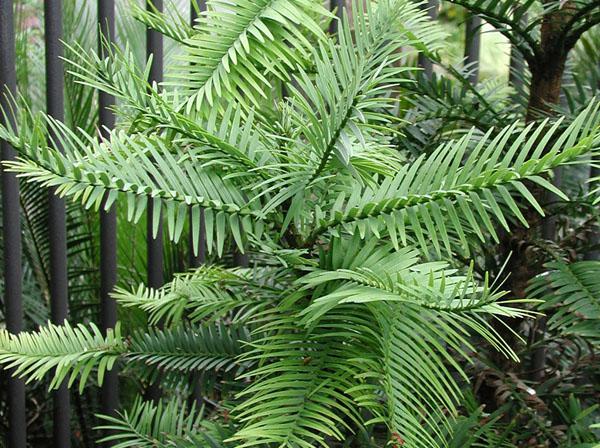
Welwitschia (Welwitschia mirabilis) - the plant opened in 1860 by the Portuguese botanist Friedrich Welwitschia in tropical rocky deserts of South Africa.
The trunk of the plant is only slightly above the surface of the soil, and leaves only two: they are spread along the ground and are 1 meter long and the width is 20 cm.
In the corners of the leaves appear branched inflorescences bearing on the ends of branches pineal ears. Cones oblong or fusiform consist of 70 - 90 scales in the sinuses which is one flower.
Life expectancy Welwitschia varies from 400 to 1500 years.
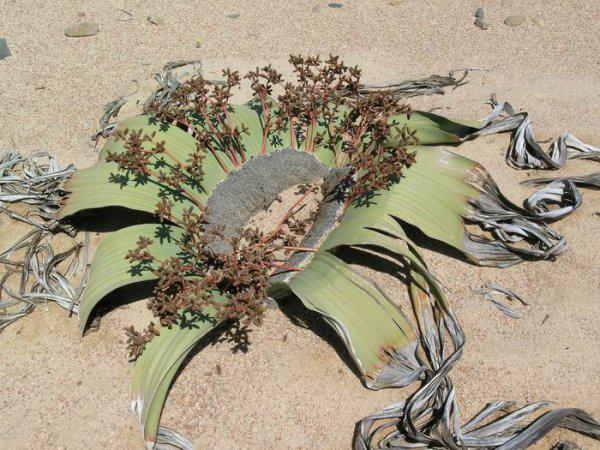
Drakeya (Drakaea glyptodon) - orchid that grows in Australia and dissolved strictly in those six weeks, which hatch and live a certain kind of male wasps that pollinate the plant.
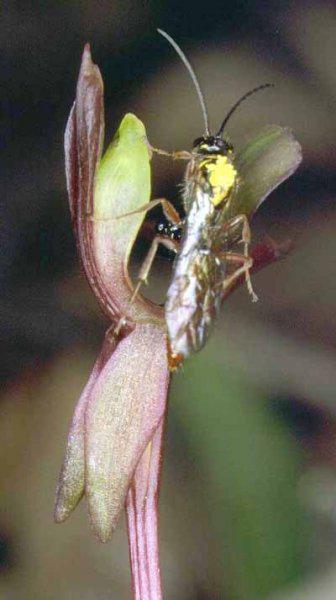
Wolffia (Wolffia angusta) - subtropical plant, is found in North and West Africa, Asia and America. All the world, there are 17 species Wolffia.
Wolffia consists of round-oval stem of 0, 3-2, 0 mm in diameter, have leaves and roots. These spheres freely float on the water surface potreblinya dissolved therein nutrients.
Blossoms Wolffia very rare and its flowers, the size of a pinhead, are the smallest in the world.
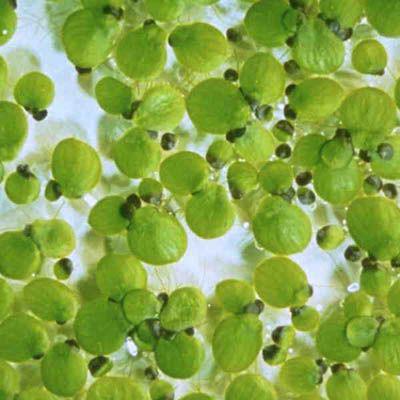
Source
Rafflesia flower in the bud looks like a head of cabbage, and in expanded form up to 1 meter in diameter and weighs 4.6 kg.


Gidnora African (Hydnora africana) - insectivorous flower that grows in the deserts of South Africa.


Arum ordinary (Dracunculus vulgaris) - plant height of 90 cm, the leaves reach 20 cm in length.
Petioles and stems are fleshy - with brown spots, which gives them the appearance of snake skin. At the top of each Steblin with early summer inflorescence appears. Blanket with wavy edge reaches a length of 45 cm. Outside, it is a pale green, inside - purple and crimson. Dark purple spathe of the same length as the veil.


Amorphophallus (Amorphophallus) refers to the lily family. Its flowers are dissected in the middle of huge leaves, from which comes a large spathe.
The aroma of this plant is usually compared with the smell of rotten eggs, spoiled meat or fish, but it attracts insects that pollinate the plant.
Amorphophallus opened Florentine scholar in 1878 in Sumatra.
The plant lives about 40 years and during that time blooms a couple of times.



Wollemi (Wollemia nobilis)
In August 1994, D.Nobl (D.Noble; National Parks and Wildlife of New South Wales, Australia) got into one of the wildest parts of the National Park "Wollemi", where he found some strange trees. The tallest of them with the barrel meter diameter reached 35 meters. The trunks were covered with chocolate-brown spongy bark-like bubbles of chocolate, and branches - densely covered with large broad needles, with young needles were noticeably brighter than the old.
This kind of relic conifers was called Wollemi Nobilis - on behalf of the park and the discoverer.
Wollemi - currently "living fossil"; its closest relatives are known from fossils the Jurassic and Cretaceous (200 - 65 million years ago).
The population is very low: only 23 known adult tree (the oldest about 400 years).

Welwitschia (Welwitschia mirabilis) - the plant opened in 1860 by the Portuguese botanist Friedrich Welwitschia in tropical rocky deserts of South Africa.
The trunk of the plant is only slightly above the surface of the soil, and leaves only two: they are spread along the ground and are 1 meter long and the width is 20 cm.
In the corners of the leaves appear branched inflorescences bearing on the ends of branches pineal ears. Cones oblong or fusiform consist of 70 - 90 scales in the sinuses which is one flower.
Life expectancy Welwitschia varies from 400 to 1500 years.

Drakeya (Drakaea glyptodon) - orchid that grows in Australia and dissolved strictly in those six weeks, which hatch and live a certain kind of male wasps that pollinate the plant.

Wolffia (Wolffia angusta) - subtropical plant, is found in North and West Africa, Asia and America. All the world, there are 17 species Wolffia.
Wolffia consists of round-oval stem of 0, 3-2, 0 mm in diameter, have leaves and roots. These spheres freely float on the water surface potreblinya dissolved therein nutrients.
Blossoms Wolffia very rare and its flowers, the size of a pinhead, are the smallest in the world.

Source








